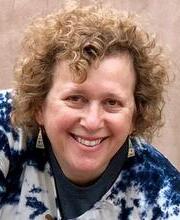Alyssa A. Goodman
Co-Director for Science at the Radcliffe Institute for Advanced Study

Alyssa Goodman is the Robert Wheeler Willson Professor of Applied Astronomy at Harvard University, Co-Director for Science, Radcliffe Institute for Advanced Study, and a Research Associate of the Smithsonian Institution. Goodman's research and teaching interests span astronomy, data visualization, and online systems for research and education.
In her astronomical pursuits, Goodman and her research group at the Harvard-Smithsonian Center for Astrophysics in Cambridge, MA study the dense gas between the stars. They are particularly interested in how interstellar gas arranges itself into new stars. Their investigations use a variety of observational techniques covering the spectral range from X- ray to radio. Goodman was the Principal Investigator of The COMPLETE Survey of Star-Forming Regions, which mapped out three very large star-forming regions in our Galaxy in their entirety. More recently, Goodman and collaborators have been focusing on using very dense filamentary clouds, which they've dubbed The Bones of the Milky Way, to map out the structure of our own Galaxy at very high resolution.
In computationally-oriented efforts, Goodman co-founded The Initiative in Innovative Computing (IIC) at Harvard, and she served as its Director from 2005-8. The initiative created a university-wide interdisciplinary center at Harvard fostering work at the boundary between computing and science. At present, Goodman leads a diverse group of researchers, librarians, and software developers in an ongoing effort known as "Seamless Astronomy," aimed directly at developing, refining, and sharing tools that accelerate the pace of scientific research, especially in astronomy. Current Seamless projects and spinoffs include glue, Authorea, the ADS All Sky Survey, the Astronomy Dataverse, and the WorldWide Telescope Ambassadors Program. The glue project, which allows for linked-view visualization of high-dimensional data, has drawn Goodman into medical imaging and machine learning research, even though the NASA-funded softwares primary purpose is to help users of the upcoming James Webb Space Telescope better understand our Universe.